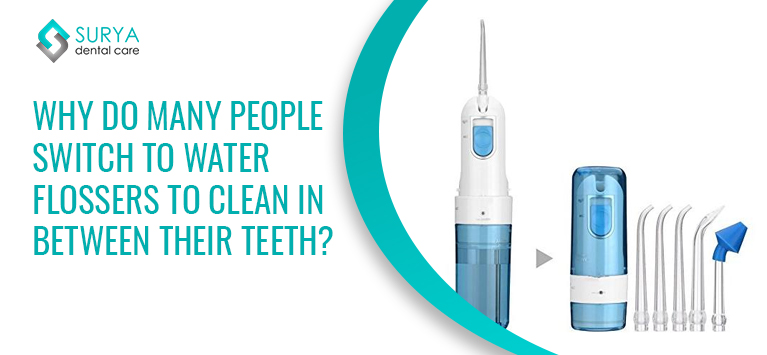
Brushing twice a day and flossing once a day are crucial to keep your mouth healthy. As the toothbrush bristles cannot reach and clean the tight spaces between your teeth efficiently, oral hygienists suggest appliances like a thin string of nylon or Teflon (flossing wire), interdental brush to clean between the teeth and underneath the gum line.
This practice holds various health benefits like preventing the build-up of plaque, reducing bad breath, reducing the risk of cavities, etc.
If you want to do floss whilst having trouble with flossing wires, then you can prefer water flossers. Do you want to know more about this appliance? This post is for you. Keep reading.
What is a Water Flosser?
Water floss is a handheld device that contains a special water flosser tip, motor with pump, and a water reservoir. When it is switched on, the motor and pump produce a stream of pulsating water from the reservoir. The stream of pressurized water is emitted through the flosser tip against the teeth.
In simply, you are going to clean the interdental spaces with a steady stream of water instead of a flossing wire. Hence this device is also known as “Oral irrigator”.
How to clean your mouth with water dental flossers?
Fill the flosser’s reservoir with lukewarm water.
Hold the appliance at 90 degrees towards your teeth and turn it ON.
The water discharged at a steady speed from the flosser will swish away residues, dislodge food particles stuck between the teeth. Most water flossers come with the feature of adjusting water pressure so that you can adjust the degree of pulsation as you want.
Similar to brushing, make sure you have cleaned all the teeth surfaces.
Note: Empty the reservoir once you finished flossing because leaving the remaining water allows bacteria growth inside the water flosser.
What are the different types of dental water flossers?
The water flossers are categorized into 4 types as follows:
1) Countertop Water Flosser – It is quite big and is more effective than other types of oral irrigators.
2) Cordless Water Flosser – It runs on a battery and is portable so that this water flosser is easy to carry with you while traveling.
3) Shower Flosser – As the name implies, you have to attach it to the showerhead so that this appliance does not need electricity or a battery to work. You can simply floss by opening the showerhead. The only disadvantage is, it is quite hard to handle when compared to other kinds of flossers.
4) Faucet Flosser – The faucet water flosser allows you to fix its water jacket to the faucet using an inner thread connector, outer thread connector, and an adapter (Water separator). Similar to shower flossers, it is also quite tough to maneuver.
Why do you consider water flosser?
As we stated earlier, water flosser is the right choice for people who do not feel comfortable with flossing wire. Similarly, the wire will injure the gum tissues if you are aggressive in flossing. Luckily, the water jet pressure and pulsations are adjusted to match your needs so that gum injuries are less likely to happen.
In the meantime, various attributes bock a person from cleaning the interdental space with a flossing wire. Here are some:
- Wearing dental braces
- Having implant teeth
- Repaired a tooth with dental bridges/crowns
- Having sensitive gums
Dentists & Oral hygienists prescribe oral irrigators for people who are suffering from disorders like Parkinson’s disease, Arthritis, Carpal Tunnel Syndrome & other conditions with which a person can do limited movements.
Is water flossing better than string flossing?
It is still debatable whether water flossing mimics the effectiveness of a flossing wire. However, Researches show that water flossers are more effective than traditional flossing in removing plaque.
So it is better to consult your dentist before moving to oral irrigators.
Bottom line
Even though the water flossers clean areas that cannot be reached with toothbrush bristles, this appliance cannot replace brushing. Remember that oral irrigators are alternatives to flossing appliances alone.
Your oral care regimen should include brushing twice and flossing once a day along with timely dental checkups to maintain a gorgeous, healthy smile.



